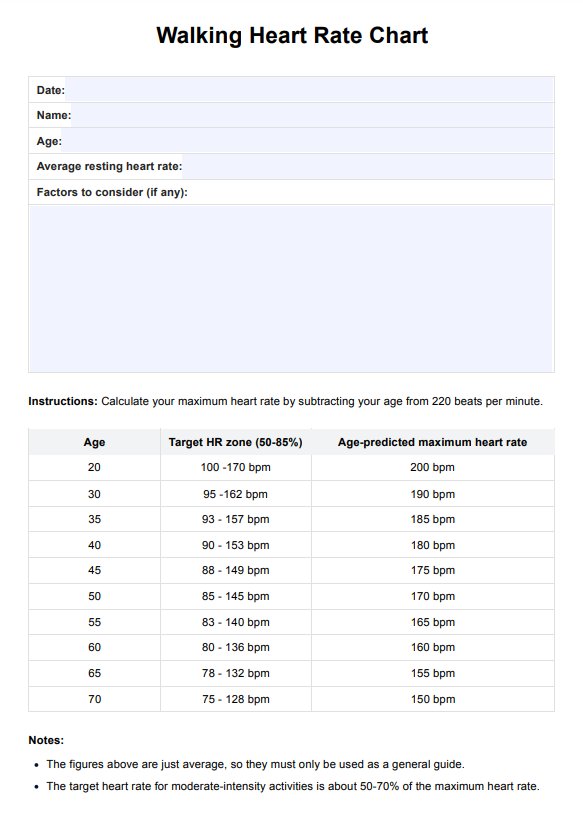Healthcare providers, especially those who care for individuals of all fitness levels, from beginners to experienced walkers, request this chart.

Walking Heart Rate
Use a reference tool to help track patients' heart rates during physical activities with our Walking Heart Rate Chart PDF.
Walking Heart Rate Template
Commonly asked questions
The Walking Heart Rate Chart is used by individuals of all fitness levels, from beginners to experienced walkers, to determine their ideal heart rate range during exercise, monitor their heart rate, track their progress, identify potential health concerns, and optimize their exercise routine.
To use a Walking Heart Rate Chart, the patient must determine their maximum heart rate by subtracting their age from 220, find their age group on the chart, and monitor their heart rate during exercise using a heart rate monitor or fitness tracker. Adjust their walking pace if their heart rate falls below or exceeds the target zone.
EHR and practice management software
Get started for free
*No credit card required
Free
$0/usd
Unlimited clients
Telehealth
1GB of storage
Client portal text
Automated billing and online payments











